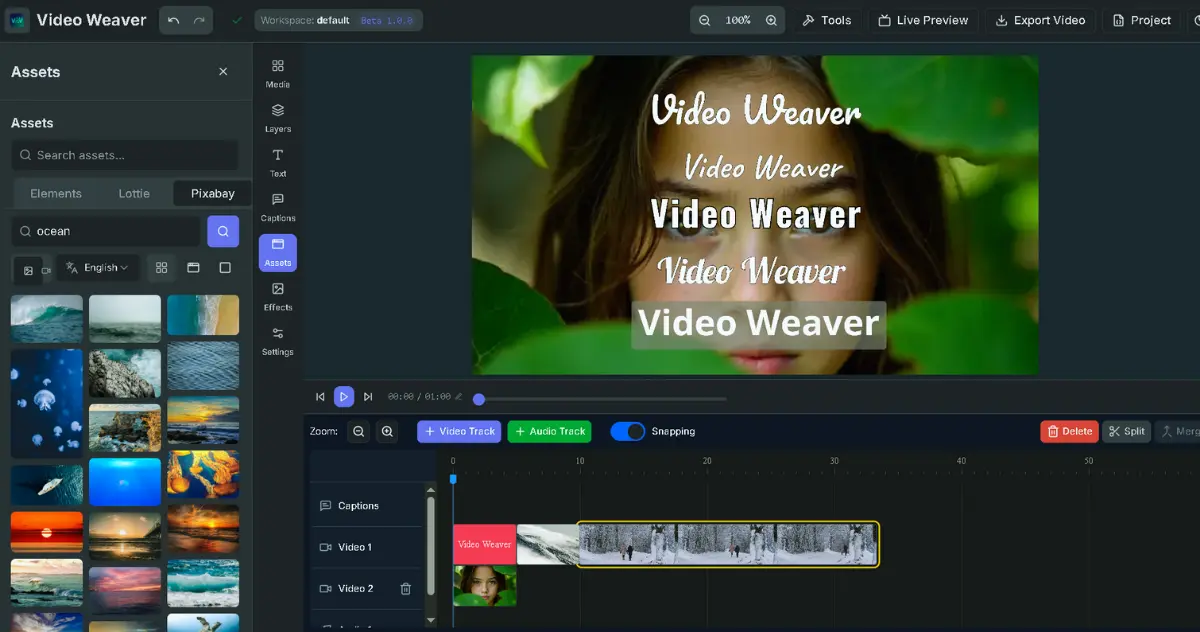DeepSeek-V3.2-Exp Unveiled: A More Efficient and Economical Choice for Long-Context Processing
AI startup DeepSeek has launched its latest experimental model, DeepSeek-V3.2-Exp, featuring the innovative DeepSeek Sparse Attention (DSA). This technology aims to significantly improve training and inference efficiency for long-text processing while maintaining top-tier performance comparable to its predecessor. Excitingly, the new model’s release is accompanied by a more than 50% reduction in its API price, offering developers and enterprise users a more cost-effective AI solution.
On the fast track of artificial intelligence, efficiency and cost have always been the two key engines driving technological popularization. Just recently, the high-profile AI company DeepSeek dropped a bombshell, officially releasing and open-sourcing its latest experimental large language model—DeepSeek-V3.2-Exp. This is not just a regular iterative update, but a bold exploration in architecture, heralding the possible development direction of the next generation of AI models.
So, what’s so special about this new model? Simply put, it has become faster and cheaper when handling “long-text” tasks that are extremely computationally intensive. And all of this is thanks to its core technology: DeepSeek Sparse Attention (DSA).
What is DeepSeek Sparse Attention (DSA)? And why is it important?
Imagine when you are reading a ten-thousand-word long article and trying to answer a question in it, you will read the full text, but your brain will automatically focus on the few paragraphs most relevant to the question, instead of analyzing all the content word by word. The traditional AI attention mechanism is like an overly serious student. It will make every word in the model pay attention to all the words in the article. This “full attention” is fine when the text is short, but once the text length increases, the amount of computation will grow quadratically, becoming extremely expensive and slow.
DeepSeek’s DSA technology was born to solve this pain point. It introduces a smart screening system for the model, which mainly includes two parts:
- Lightning Indexer: This is a lightweight scorer (which is also a small Transformer model). When the model processes a word (query token), this indexer will quickly scan all the previous words and score their “relevance”. Since this process uses the efficient FP8 format and fewer computing units, the speed is very fast.
- Fine-grained Token Selection: According to the score of the indexer, the system will only select the top-k (e.g., 2048) words with the highest scores, so that the current word only performs deep attention calculation on these most relevant “candidates”.
In this way, DSA successfully reduces the computational complexity from O(L²) to O(Lk), where L is the text length and k is the small number of keywords selected. This means that even if the text length reaches 128K or even longer, the model can still operate efficiently without being crushed by the huge amount of calculation.
Performance Undiminished, Efficiency Doubled
Usually, improving efficiency may mean sacrificing performance. But one of the most commendable things about DeepSeek-V3.2-Exp is that after introducing DSA, its performance on major public evaluation benchmarks is almost on par with the previous powerful V3.1-Terminus model.
Whether it is MMLU-Pro that tests comprehensive knowledge, Codeforces and Aider-Polyglot that test code capabilities, or BrowseComp that simulates agent tasks, V3.2-Exp has shown strength comparable to the previous generation in multiple fields. Although there is a slight decline in some specific tasks (such as the HMMT math competition), the official explanation is that this may be due to the new model’s tendency to generate a more concise reasoning process, but overall, this architectural upgrade has successfully achieved “having your cake and eating it too”.
Significant Cost Reduction, a Boon for Developers and Enterprises
The advancement of technology must ultimately be reflected in the value at the application level. Along with the release of V3.2-Exp, DeepSeek has significantly reduced the price of its API by more than 50%. According to the latest pricing announced by the official, the cost of input tokens (cache miss) has been reduced to $0.28 per million tokens, and output tokens have been reduced to $0.42 per million tokens.
This is undoubtedly great news for developers and enterprises that need to process a large number of documents, perform complex RAG (Retrieval-Augmented Generation), or develop long-text analysis tools. Lower costs mean higher deployment feasibility and broader application prospects.
How to get started with DeepSeek-V3.2-Exp?
As an open-source model, DeepSeek-V3.2-Exp has been listed on platforms such as Hugging Face, and provides complete code and related resources to facilitate community research and deployment.
- For developers: You can immediately test the V3.2-Exp API to evaluate its performance in specific application scenarios, especially the cost and efficiency advantages in long-text processing.
- For enterprise users: Consider migrating existing applications to the new model to enjoy significant cost savings.
- For researchers: In-depth study of the theoretical basis of DSA to explore the application potential of this efficient architecture on other models.
Summary and Outlook
The launch of DeepSeek-V3.2-Exp is not only a major breakthrough for DeepSeek itself in model architecture, but also provides a new idea for the entire AI field to deal with the challenge of long text. Through the innovative sparse attention mechanism, it has successfully improved computing efficiency and reduced usage costs without sacrificing too much performance.
Although this is still an “experimental” version, and its performance on some tasks still has room for fine-tuning, the huge potential it has shown undoubtedly points to a more efficient, more economical, and more sustainable direction for the future development of large language models.
Frequently Asked Questions (FAQ)
Q1: What is the fundamental difference between DeepSeek-V3.2-Exp and V3.1-Terminus? A1: The main difference lies in the implementation of the attention mechanism. V3.2-Exp introduces “Deep Sparse Attention (DSA)”, which can selectively calculate attention weights, thereby greatly reducing the computational complexity when processing long texts. Although the model parameter size (67B) remains unchanged, V3.2-Exp has achieved a qualitative leap in training and inference efficiency.
Q2: Will sparse attention affect the output quality of the model? A2: According to the official benchmark test, the performance of V3.2-Exp is comparable to V3.1-Terminus on most tasks. DSA is carefully designed to retain the most important attention connections, so the impact on output quality is minimal.
Q3: Will V3.2-Exp completely replace V3.1-Terminus? A3: Currently, V3.2-Exp is an experimental version, mainly for technical verification and community testing. DeepSeek officially stated that it will temporarily retain the V3.1-Terminus API interface for users to conduct comparative tests, and will decide the release plan for the official version of V3.2 based on community feedback.




